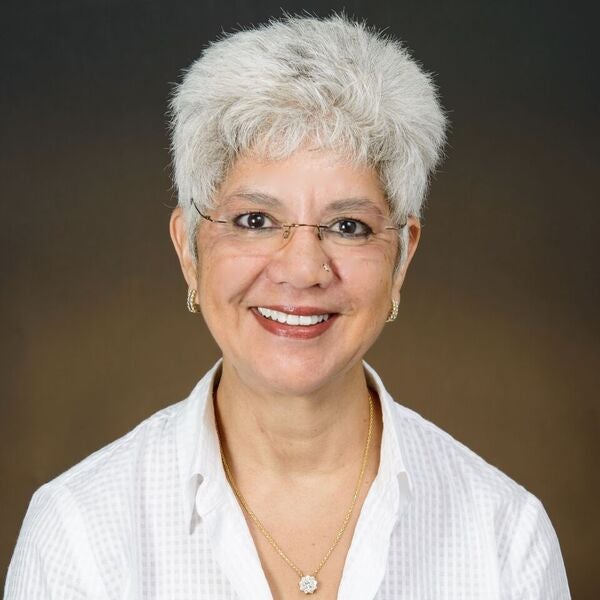They have what most would want — affluent upwardly mobile parents, living in comfortable homes in the suburbs, going to an elite high school and being groomed for the nation’s best colleges. And they appear to thrive in this setting — popular among their peers, performing exceedingly well in school, highly regarded by peers and teachers, and accomplished at a various extracurricular activities.
But these “privileged” American high schoolers can be at high risk for problematic substance abuse across early adulthood, according to new research from Arizona State University.
Suniya Luthar
“We found alarmingly high rates of substance abuse among young adults who we initially studied as teenagers,” said Suniya Luthar, a Foundation Professor of psychology at Arizona State University and a professor emerita at Columbia University’s Teachers College, who led the research. “Results showed that among both men and women and across annual assessments, these young adults had substantial elevations, relative to national norms, in frequency of several indicators — drinking to intoxication and of using marijuana, stimulants such as Adderall, cocaine and club drugs such as ecstasy.”
The paper, “Adolescents from upper middle class communities: Substance misuse and addiction across early adulthood,” appears in the current issue of Development and Psychopathology. It is co-authored by Phillip Small, an ASU graduate student in clinical psychology, and Lucia Ciciolla, an assistant professor at Oklahoma State University.
In the article, the authors describe a study of two groups of students in affluent communities in the Northeast U.S. as part of the New England Study of Suburban Youth (NESSY). The researchers assessed these youngsters as high school seniors and then annually across four college years (NESSY-Y, for the younger cohort), and across ages 23 to 27 (NESSY-O, for the older cohort).
“We found rates of addiction to drugs or alcohol among 19 to 24 percent of women in the older cohort by the age of 26, and 23 to 40 percent among men. These rates were three and two times as high respectively, as compared to national norms,” Luthar said. “Among the younger cohort by the age of 22 years, rates of addiction were between 11 and 16 percent among women (close to national norms) but 19 to 27 percent among men, or about twice as high as national norms.”
Luthar said a look into the lives of these adolescents provide some clues to the cause of these high rates of addictions.
When the NESSY groups were first assessed, they all attended the best schools in the region — suburban schools with very high standardized test scores, rich extra-curricular offerings and high proportions of their graduates heading off to highly selective universities. In general, kids at such schools experience enormous pressures to achieve, and many come to live by the dual credos of “I can, therefore I must” and “We work hard and we play hard” with the playing involving parties with drugs and alcohol.
Also implicated is affluence in the school community.
“Not all of these students were from wealthy families but most were, as parents typically had advanced educational degrees and median incomes much higher than national norms,” Luthar said. “And without question, most of the parents wanted their kids to head off to the best universities, as did the kids themselves.”
With affluence comes ease in acquiring drugs, she added. “Many kids in these communities have plenty of disposable income with which they can get high-quality fake IDs, as well as alcohol and both prescription and recreational drugs.”
"These ostensibly privileged youth, many of who start experimenting early and often with drinking and drugs, could well be among the groups at highest risk for alcoholism and addiction in adulthood.”
— Suniya Luthar, ASU Foundation Professor of psychology
Other factors that exacerbate the risks, Luthar said, include widespread peer approval for substance use, and the fact that parents can be lulled into a false sense of security, believing that as their kids continue to perform well in school there could not be any serious underlying issues. As a result, they can become somewhat laissez-faire about detected alcohol or marijuana use.
So what can be done to reverse this trend?
“This is a problem that derives from multiple levels of influence, so we’re going to need interventions at multiple levels to tackle it,” Luthar said.
“At the level of the kids themselves and their parents, it will be important to disseminate research findings — based on rigorous scientific data — that messing with drugs and alcohol really should not be trivialized as just something all kids do,” Luthar said. “The earlier children start to use and the more frequently they do, the more likely it is that they will develop addictions down the line.”
Luthar pointed to strategies like sex-education programs conveying the “bottom line” of risks involved, such as “it only takes once” to contract a sexually transmitted disease.
“For high-achieving and ambitious youngsters, it could actually be persuasive to share scientific data showing that in their own communities the statistical odds of developing serious problems of addiction are two to three times higher than norms,” Luthar said. “And that it truly just takes one event of being arrested with cocaine, or hurting someone in a drunken car accident, to derail the high-profile positions of leadership and influence toward which they are working so hard for the future.”
On a second level is reducing the enormous pressure these kids are under trying to get into only the most selective universities.
“As long as university admissions processes continue to be as they are — increasingly smaller number of admits per applications and requiring impossible resumes — these young people will continue to be frenetic in pursuing those coveted spots and many will continue to self-medicate as a result,” Luthar said. “An alternative approach, suggested by my colleague Barry Schwartz, could be to have these highly selective universities institute a lottery system for final admittance, given all other qualifications and resumes being equal.
A second important measure would be showing the kids there are role models of adults who did not go to an elite university, but who picked a college because it felt right for them and who were highly successful in life.
“It shows that there is, in fact, life, wisdom, financial solvency, creativity and, yes, happiness beyond the walls of the Ivy Leagues,” Luthar said.
A third factor is for leaders in science, public health and social policy to take seriously the fact that youth at high-achieving schools could be a population that is at inordinately high risk for addiction. Decades ago, developmental researchers established that children growing up in chronic poverty were at high risk for maladjustment, and this led, laudably, to a plethora of studies trying to figure out how best to minimize risks and foster resilience among these youth by addressing different aspects of their environments.
“We now need the same dedicated research on kids who grow up in pressure-cooker, high-achieving schools,” Luthar said. “Paradoxical though it may seem, these ostensibly privileged youth, many of who start experimenting early and often with drinking and drugs, could well be among the groups at highest risk for alcoholism and addiction in adulthood.”
More Science and technology

ASU professor wins NIH Director’s New Innovator Award for research linking gene function to brain structure
Life experiences alter us in many ways, including how we act and our mental and physical health. What we go through can even change how our genes work, how the instructions coded into our DNA are…

ASU postdoctoral researcher leads initiative to support graduate student mental health
Olivia Davis had firsthand experience with anxiety and OCD before she entered grad school. Then, during the pandemic and as a result of the growing pressures of the graduate school environment, she…

ASU graduate student researching interplay between family dynamics, ADHD
The symptoms of attention deficit hyperactivity disorder (ADHD) — which include daydreaming, making careless mistakes or taking risks, having a hard time resisting temptation, difficulty getting…

